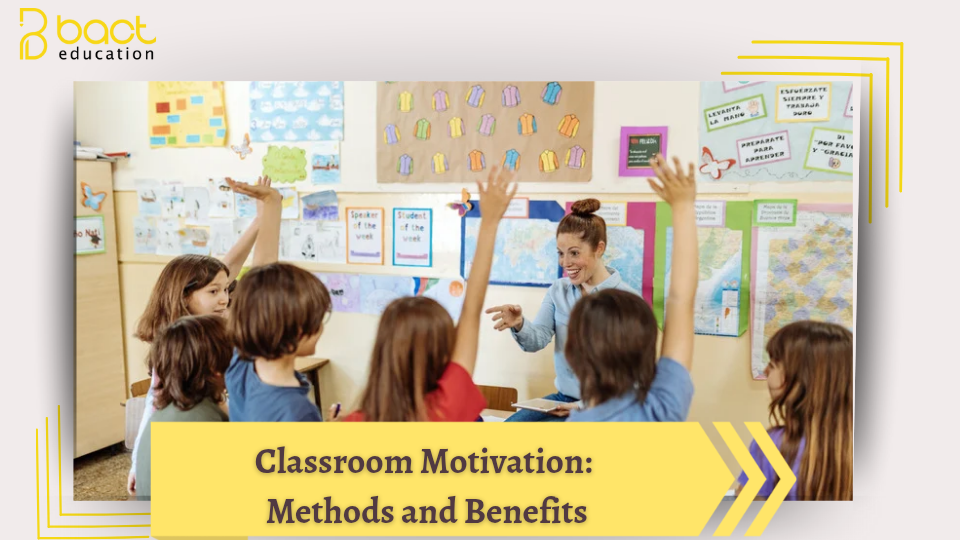Classroom Motivation:
Methods and Benefits
Classroom motivation is the process of motivating students to learn and engage in the educational process. It plays a crucial role in improving the quality of education and increasing student achievements. In this article, we will explore the methods and benefits of classroom motivation, as well as the roles of teachers, the government, and external parties in promoting it.
Methods of Classroom Motivation:
-
Encouragement and Appreciation : Providing encouragement and appreciation to students for their achievements, no matter how small. For example, teachers can award certificates of appreciation to students who excel in a particular project.
-
Goal Setting : Helping students set their goals and motivating them to work towards achieving them. For instance, teachers can assist students in setting academic goals and providing action plans to achieve them.
-
Interaction and Engagement : Encouraging students to interact and engage in the educational process through questions and discussions. For example, teachers can encourage students to participate in class discussions and share their opinions on academic topics.
-
Interactive Presentation : Using interactive educational techniques such as educational games and videos. For instance, teachers can use educational games to teach mathematical or physical concepts.
-
Comfortable Learning Environment : Creating a comfortable and motivating learning environment in the classroom. For example, teachers can provide a comfortable classroom environment by ensuring suitable furniture and adequate lighting.
Benefits of Classroom Motivation:
-
Improved Student Achievements : Classroom motivation can lead to improved student achievements and increased performance levels.
-
Increased Engagement : Classroom motivation can increase student engagement in the educational process.
-
Improved Teacher-Student Relationship : Classroom motivation can improve the relationship between teachers and students, creating a trusting and respectful atmosphere.
-
Development of Student Skills : Classroom motivation can help develop student skills such as problem-solving and critical thinking.
Role of Teachers:
-
Providing a Motivating Learning Environment : Teachers should provide a motivating learning environment that encourages students to learn and engage.
-
Using Varied Teaching Methods : Teachers should use varied teaching methods to motivate students.
-
Providing Support and Encouragement : Teachers should provide support and encouragement to students.
Role of the Government:
-
Providing Resources : The government should provide the necessary resources to improve the quality of education.
-
Developing Educational Programs : The government should develop educational programs that promote classroom motivation.
-
Supporting Teachers : The government should support teachers by providing necessary training and resources.
Role of External Parties:
-
Providing Financial Support : External parties can provide financial support necessary to improve the quality of education.
-
Providing Human Resources : External parties can provide human resources necessary to improve the quality of education.
-
Providing Expertise : External parties can provide expertise necessary to improve the quality of education.

